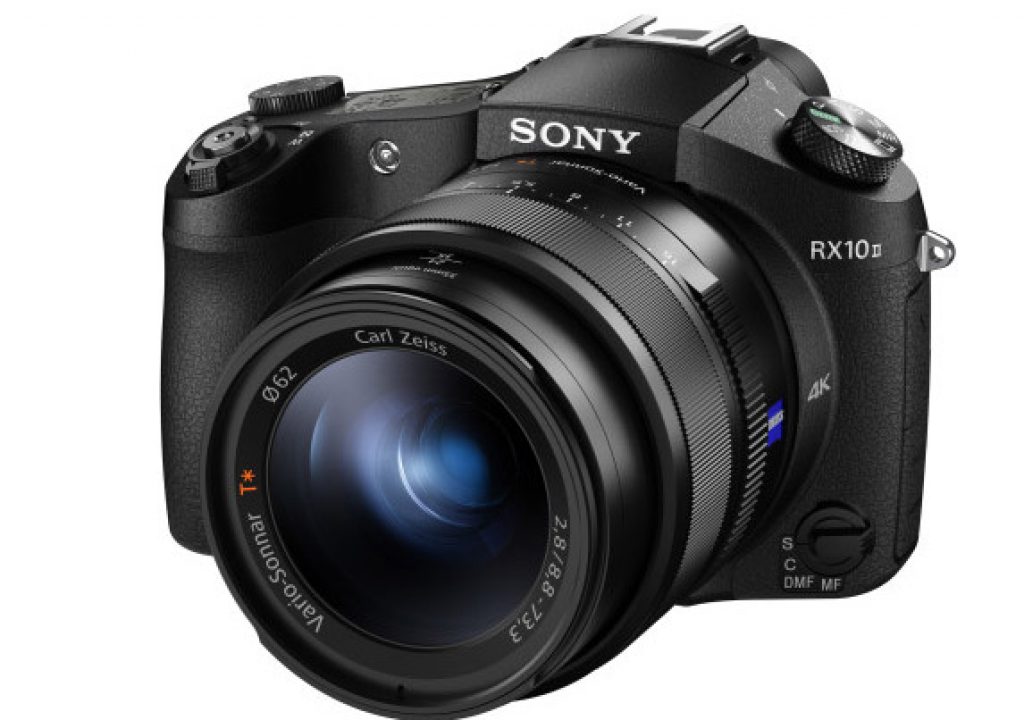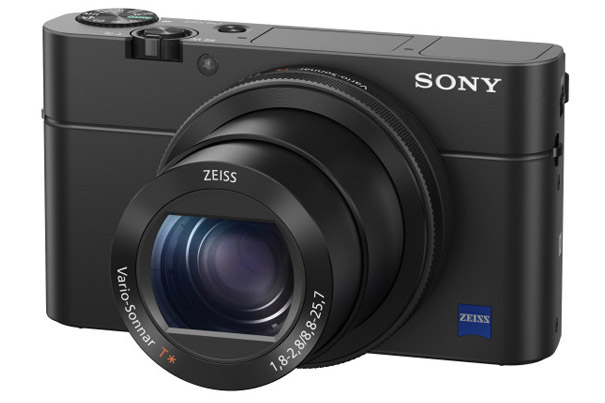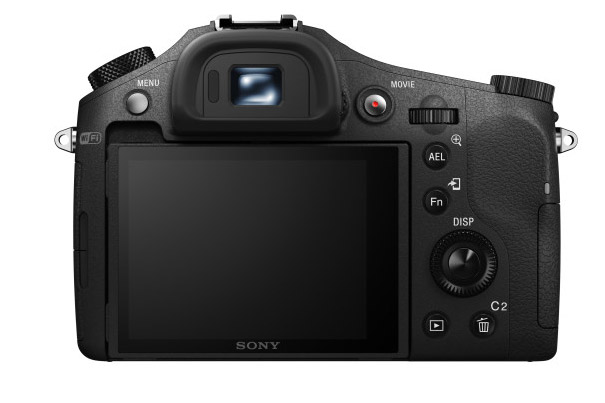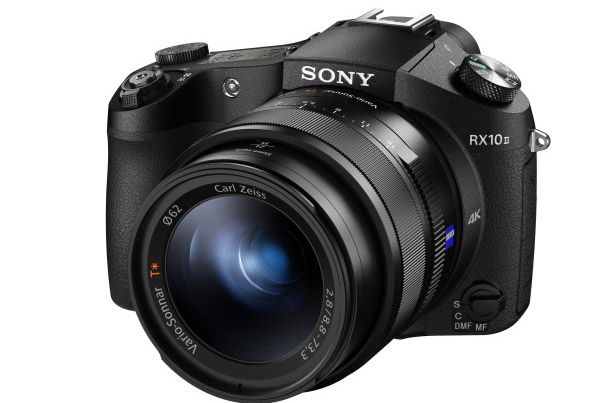
The new Cyber-shot cameras, the compact RX100 IV (model DSC-RX100M4) and high-zoom RX10 II (model DSC-RX10M2) offer users the world’s first 1.0 type stacked Exmor RS CMOS sensor with advanced signal processing and an attached DRAM memory chip.
The high speed signal processing and DRAM memory chip work together to enable more than 5x faster readout of image data compared to previous RX100 III and RX10 models. This evolution is responsible for a variety of standout features that have previously been available in only a select few professional-level video cameras. And the new Sony Cyber-shot RX10 II model may be an unexpected competitor to Canon’s XC10, which costs almost double the price.
Some of these features are the ability to capture 40x super slow motion video at up to 1000fps, an ultra-fast Anti-Distortion Shutter with a maximum speed of 1/32000 second, high resolution 4K movie shooting and more. As usual, sound cannot be recorded when shooting slow motion. A SDXC memory card of Class 10 or higher is required, and the option is available in PAL, with PAL/NTSC switchable in the menu system. Also, as usual, a SDXC memory card with a Class 10 or higher speed rating is required for XAVC S recording and UHS Speed Class 3 is required for recording at 100Mbps.
40x Super Slow Motion
A first for Sony consumer cameras, the new RX100 IV and RX10 II both have the ability to record super slow-motion video at up to 40x slower than the standard rate, allowing users to capture and replay fleeting moments of action with incredible detail, resolution and clarity.
Prior to shooting, users will have the ability to choose among 1000fps, 500fps and 250fps frame rates and among 50p and 25p (960fps, 480fps and 240fps at 60p, 30p and 24p in NTSC mode) playback formats to optimise the recording to fit the speed of the moving subject, with the option to use the movie record button as a ‘start trigger’ to begin recording once button is pressed or ‘end trigger’ to record footage up until the button is pressed. The ‘end trigger’ mode lets shooting begin 2 to 4 seconds before the movie button is pressed, enabling shooters to capture the decisive moment with much more consistency and accuracy. For reference, two seconds of movie footage shot at 1000fps and 25p would take about 80 seconds to play back.
High Speed Shutter and Shooting
The impressive speed and power of the 1.0 type stacked Exmor RS CMOS sensor with an attached DRAM chip allows the new RX100 IV and RX10 II to perform exceptionally well while capturing fast-moving subjects. Specifically, it’s fast processing capability results in continuous speeds at up to 16 fps on the RX100 IV and up to 14 fps on the RX10 II for an extended period of time.
Additionally, the ultra-fast readout of the image sensor is responsible for the high speed Anti-Distortion Shutter (maximum speed of 1/32000 second), which allow the new cameras to capture sharp, crystal clear images with a wide open aperture at brightness levels up to EV19 (using a built-in ND filter). It also minimises the “rolling shutter” effect commonly experienced with fast moving subjects. This allows photographers and videographers to capture beautiful content with sharply focused subjects and defocused backgrounds under some of the most difficult, bright lighting conditions.
High Precision Direct 4K Movie Recording
The new RX100 IV and RX10 II models are the first Cyber-shot cameras to offer the advantages of 4K (QFHD 3840×2160) movie recording. The cameras utilise full pixel readout without pixel binning to ensure that all the finer details of 4K video are captured with minimal moire and ‘jaggies’. These high-quality results are achieved through use of the XAVC S codec, which records video at a high data rate of 100 Mbps during 4K recording and 50 Mbps during full HD shooting.
The capacity for shooting 4K differs slightly on each of the two cameras, as the more professionally styled RX10 II can shoot 4K video at extended lengths (up to 29 minutes in Europe), while the more casual, pocket-friendly RX100 IV can shoot 4K clips at up to about 5 minutes in length. Additional professional calibre video features on both of the new cameras include Picture Profile, S-Log2/S-Gamut, and more.
Both cameras also have advanced dual video recording functionality, allowing shooters to capture 16.8 MP still images during 4K video recording in any of 11 different composition patterns simply by pressing the shutter button.
Versatility in Design, High Speed AF
The new RX100 IV maintains the compact, pocket-sized design of the RX100 family, and has a ZEISS Vario-Sonnar T* 24-70mm (35mm equivalent) F1.8-F2.8 lens, while the new RX10 II maintains the same body design as the original RX10 and has a ZEISS Vario-Sonnar T* 24-200mm (35mm equivalent) F2.8 lens.
Each of the cameras is equipped with a new high-contrast XGA OLED Tru-Finder with approximately 2.35 million dots of resolution, ensuring true-to-life image preview and playback functionality. The RX100 IV maintains the convenient retractable EVF with ZEISS T* coating from the RX100 III model that debuted last year.
Both of the two new models feature an upgraded Fast Intelligent AF system that enables high-speed, high-precision contrast detection of a moving subject in as little as 0.09 seconds. Sony’s proprietary AF algorithm allows them to recognise and lock-in on a subject with a simple half-press of the shutter button at a much more efficient rate compared to previous models. The new cameras are also Wi-Fi and NFC compatible and can access Sony’s growing range of PlayMemories Camera Applications. Learn more at www.sony.net/pmca.
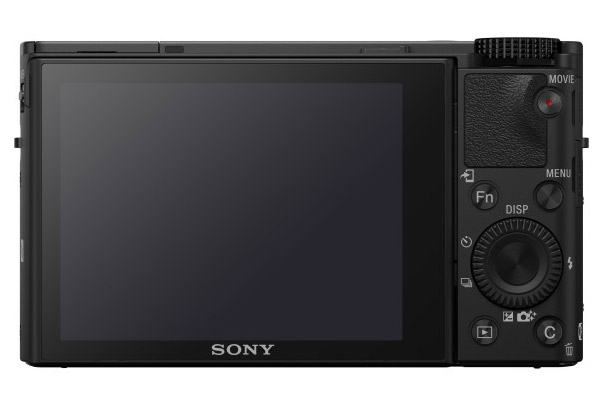
Aesthetically, both of the new models feature a variety of customisable controls and buttons to fit any shooter’s style. The RX10 II adds dust and moisture resistance as well.
There is also a new stylish soft carrying case for, model LCS-RXG, that has been introduced. Made of quality natural leather and available in brown and black colours, it is an ideal complement to the sleek designs of all the RX100 series cameras including the new RX100 IV model.
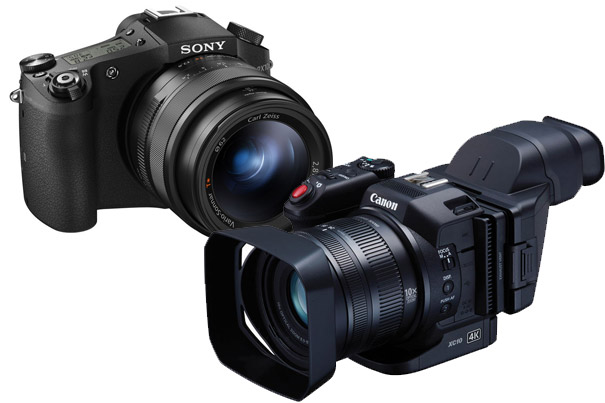
The Sony Cyber-snot RX 10 II may well be a competitor to Canon’s recently launched XC10. The difference in price may well mean that Canon will sell less XC10 than they expected. The specs from the “general public” Cyber-shot are impressive, and it costs almost half of the price and even goes beyond Canon’s XC10 specifications in certain aspects
The new Sony Cyber-shot RX100 IV(model DSC-RX100M4) compact and RX10 II (model DSC-RX10M2) high-zoom camera will be available this July for about $1000 and $1300, respectively. The pricing for the RX10 II makes it very competitive and probably creates a problem to Canon XC10, which costs $2499 and in general terms does not seem to be more of a camera than the RX10 II. And the Sony camera wins when it comes to lens, with a 28-200mm f/2.8 against the 27.3 to 273mm f/2.8-5.6 from the XC10. it will be interesting to see how the market reacts to this.

Filmtools
Filmmakers go-to destination for pre-production, production & post production equipment!
Shop Now